‘I remember how close this relationship was, but also how tough it could be,’ Gerhard Richter told biographer Dietmar Elger of his partnership with Sigmar Polke: ‘I’m often amazed it could be so brutal. Both of us were very unsure of ourselves, and each tried to cover this up in his own way.’
If it seems an unlikely admission of weakness from this most totemic of modern painters, it’s nonetheless telling. Seen grouped together for the first time since their joint exhibition at Hanover’s Galerie H in 1966, a new exhibition at Christie’s Mayfair is a riot of fragile ideas bouncing back and forth, often violently. ‘Polke/Richter Richter/Polke’ is a show themed around a rhythm. Just try reading the title aloud without performing verbal hopscotch.
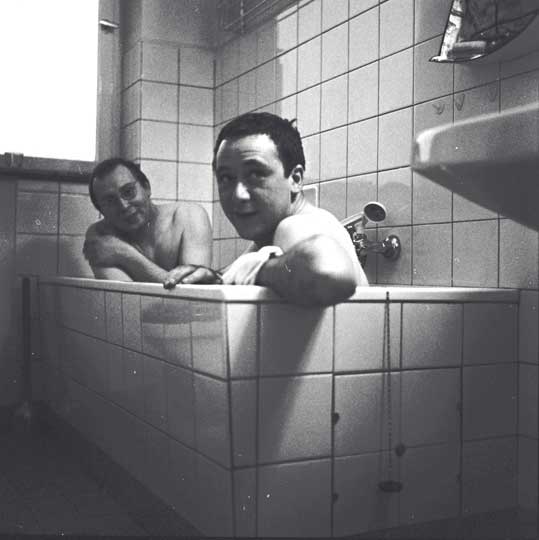
‘Taking a bath together: Sigmar Polke (in the back) and Gerhard Richter (in the front)’ (1966), Image courtesy Gerhard Richter Archive, © Gerhard Richter, 2014
‘As an artistic pairing Gerhard Richter and Sigmar Polke should be considered in the same light as Bacon and Freud, or Picasso and Matisse,’ argues gallerist, writer and curator Kenny Schachter. A bold claim, certainly, but the fact is that looking at the canvases that surround us on the ground floor of Christie’s Mayfair, he may actually be understating the case. Richter and Polke’s paintings react off one another, the former providing a sober counterweight to the latter’s irreverent tangents.
Despite a fairly significant age gap, particularly at this point in post-war history (Richter, born in 1932, was a decade older), collaboration must have seemed an attractive prospect. Both were refugees from the Communist East, who found the visual language of bourgeois prosperity as empty as the propaganda on the other side of the Iron Curtain. Their reaction, which they dubbed ‘Capitalist Realism’, stripped consumerism of its colourful bonhomie, blurring it into the endless grey of the North Sea Haar.
Richter’s signature smudged photorealism and Polke’s comically exaggerated raster dots were negative images of Pop Art, abstracting rather than accentuating the forms of mass-produced images. For all the ambition of their painting in the period – a period in which painting was generally considered redundant – what’s clear is that Polke and Richter were still establishing their identity. The evidence is there in the tentative development of the former’s Bavarian and the latter’s Flamische Krone, two works originally debuted at Galerie H in 1966.
Their later split – which Richter attributes to Polke adopting a more ‘psychedelic’ approach – now seems inevitable. But, if the catalogue to the Galerie H show (translated into English for the first time and reproduced by Christie’s) is anything to on, they were keen to be seen as a partnership. There are photographs of the pair larking about together in bathtubs, beds and trees – in fact, their jokey posing looks like a blueprint for the sort of stunts Gilbert and George pulled off 10 years later. If Richter and the curators are to be believed, though, this jollity was offset by a strong rivalry.
The curators have made an interesting fist of accentuating this artistic tug of war. Take one corner of the show, in which Polke’s Katastrophentheorie III bursts off a wall, an apocalyptic, nihilistic answer to the eerie pastoral photorealism of Richter’s Rheinlandschaft, despite the fact that the latter work was painted almost 20 years later. The floor becomes a no-man’s land – you want to duck lest the paintings bring out the heavy artillery. It’s a masterstroke of positioning.
So why are Christie’s staging this exhibition now? And why, for that matter, are its curators so keen to establish a link between these two artists and other historic ‘pairings’? Kenny Schachter contends that in the wake of Richter’s triumphant Tate Modern show, and MoMA’s Polke retrospective, coming to Bankside in the autumn, their stock has never been higher, despite the fact their partnership remains a footnote in art history. Does his counter-narrative bear examination, though?
In a round-about way, yes. Crossing the two rooms in which their paintings are grouped together is a little like walking into a pub where an argument between drinkers is on the point of turning into a fistfight. It’s thrilling, but rather overshadows the selection of Polke’s subsequent work, exiled to the upper and lower floors. In its own right, it would make for a decent mini-retrospective – his double-sided canvases, in particular Laterna Magica, are ingeniously facetious. But given that so much emphasis has been attached to the comparative display at ground level, it can feel as though Polke’s work after the 1960s has been condensed into a post-script.
‘Polke / Richter Richter / Polke’ is at Christie’s, Mayfair, until 7 July.
Unlimited access from just $16 every 3 months
Subscribe to get unlimited and exclusive access to the top art stories, interviews and exhibition reviews.

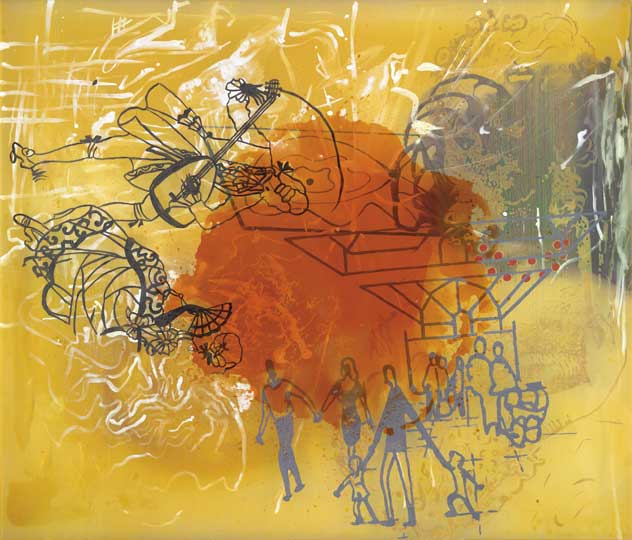
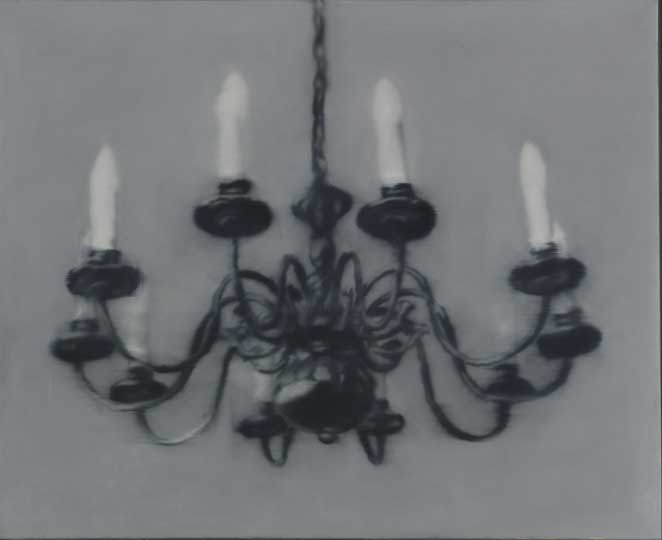
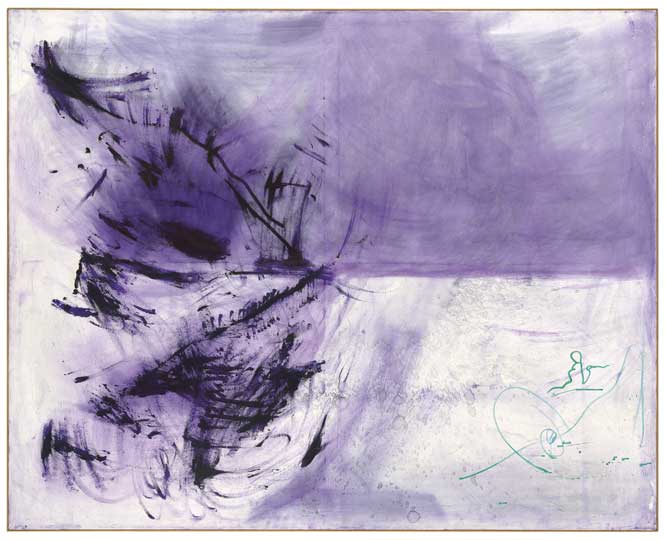
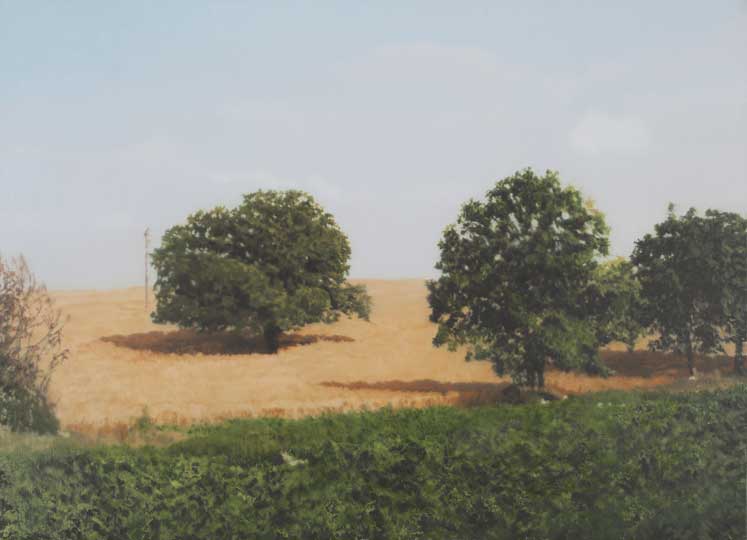
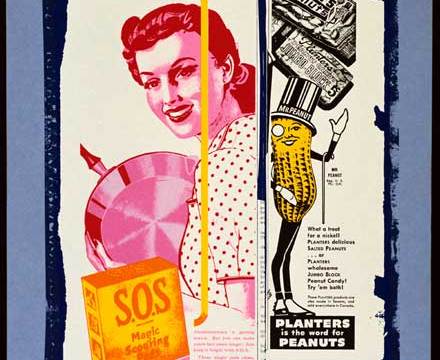
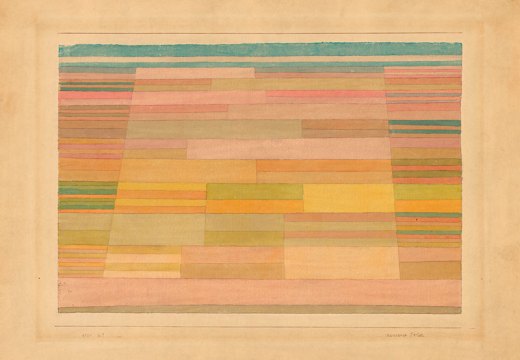









![Masterpiece [Re]discovery 2022. Photo: Ben Fisher Photography, courtesy of Masterpiece London](http://www.apollo-magazine.com/wp-content/uploads/2022/07/MPL2022_4263.jpg)
Why are fathers so absent from art history?